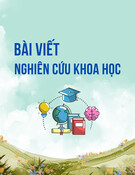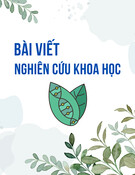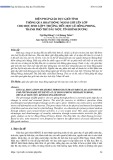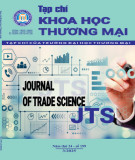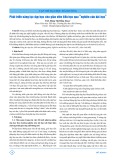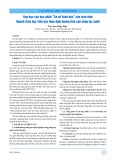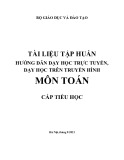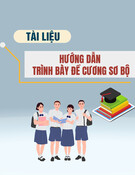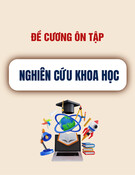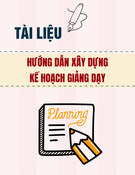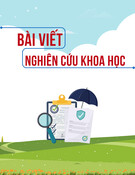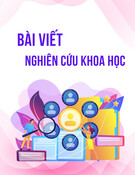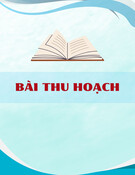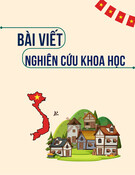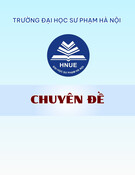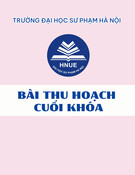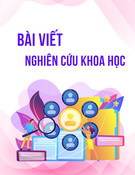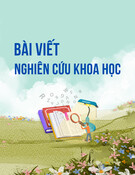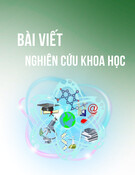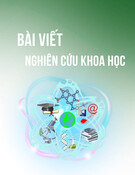
99
HNUE JOURNAL OF SCIENCE
Educational Sciences 2024, Volume 69, Issue 3, pp. 99-107
This paper is available online at https://hnuejs.edu.vn
DOI: 10.18173/2354-1075.2024-0051
BUILDING TEACHING CONTENT ON SUBSTANCE AND ENERGY TOPICS
IN SCIENCE SUBJECT 4 (2018) IN THE EXPERIENTIAL MODE
Nguyen Minh Giang1* and Bui Thi Thuy Linh2
1Department of Primary Education, Ho Chi Minh University of Education, Ho Chi Minh City, Vietnam
2Nguyen Thai Son Primary School, District 3, Ho Chi Minh City, Vietnam
*Corresponding author: Nguyen Minh Giang, email: giangnm@hcmue.edu.vn
Received January 19, 2024. Revised April 20, 2024. Accepted April 27, 2024.
Abstract. Experiential learning has been mentioned and directed for implementation in many
recent periods of educational reform in our country, especially when implementing the 2018
general education program. However, in reality, not many primary teachers in Ho Chi Minh
city apply experiential teaching in Science (2018). Based on the theoretical basis of
experiential teaching, the research has proposed four principles when organizing experiential
teaching the Substance and Energy topic in Science 4 (2018). At the same time, we build a
process for designing lesson plans according to the experiential method including four stages:
Determine the goal of organizing teaching according to the experiential method; Determine
the content of teaching and learning according to the experiential method; Design experiential
learning activities for students; Designing criteria and assessment tools in teaching according
to the experiential method of Science 4 (2018). When organizing teaching activities
according to the experiential method in teaching Science, follow four steps: Set problems and
assign experiential tasks to students; Students perform problem-solving tasks; Organize
students to form new concepts on their own; Organize students to experiment in new
situations. The research has developed 03 illustrative lesson plans including “Water pollution
and protection,” “Sound,” and “Heat transfer and thermal conductors” in the Substance and
Energy topic of Science subject 4 (2018) according to the proposed principles and
procedures. At the same time, when organizing experimental teaching with lesson plans
following the four steps above, the results showed that the test results of students in the
experimental class were better than those of students in the control class. Therefore, it can be
concluded that the four principles and four steps in the process of designing lesson plans and
stages in organizing the teaching of the Substance and Energy topic in Science 4 (2018)
according to the experiential method has formed and developed natural science competency
components for students according to the requirements to be achieved.
Keywords: Experience, Substance, Energy, Science 4, primary school, Ho Chi Minh city.
1. Introduction
Teaching capacity development using the experiential method is not a new problem in many
countries around the world as well as in Vietnam. When implementing the reform of the general
education program (2018), experiential teaching is one of the orientations on teaching methods to
develop the competencies and qualities of students [1]. Many domestic and world studies on
organizing teaching through experiential activities highlight the advantages of experiential





